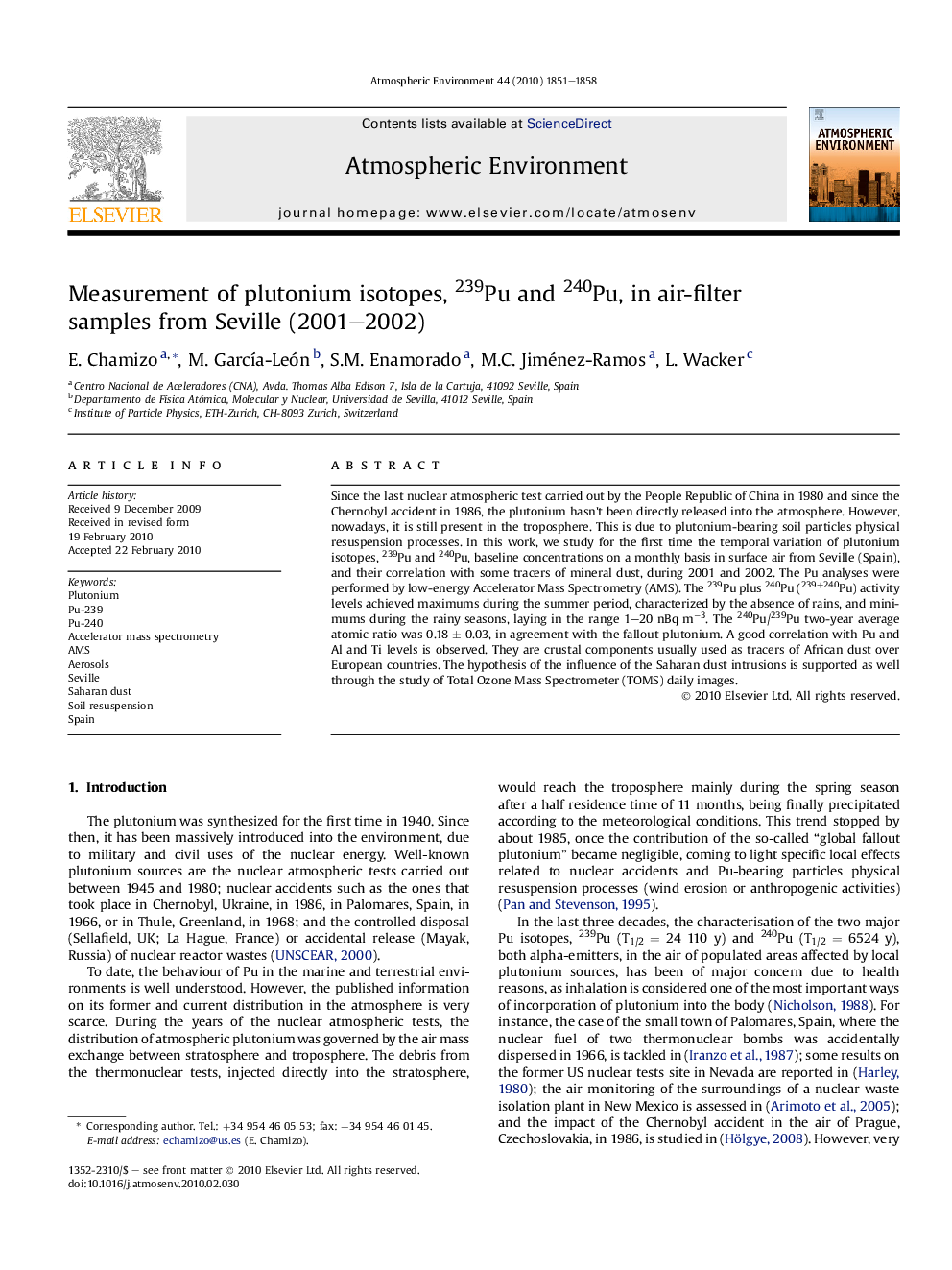| Article ID | Journal | Published Year | Pages | File Type |
|---|---|---|---|---|
| 4440370 | Atmospheric Environment | 2010 | 8 Pages |
Since the last nuclear atmospheric test carried out by the People Republic of China in 1980 and since the Chernobyl accident in 1986, the plutonium hasn't been directly released into the atmosphere. However, nowadays, it is still present in the troposphere. This is due to plutonium-bearing soil particles physical resuspension processes. In this work, we study for the first time the temporal variation of plutonium isotopes, 239Pu and 240Pu, baseline concentrations on a monthly basis in surface air from Seville (Spain), and their correlation with some tracers of mineral dust, during 2001 and 2002. The Pu analyses were performed by low-energy Accelerator Mass Spectrometry (AMS). The 239Pu plus 240Pu (239+240Pu) activity levels achieved maximums during the summer period, characterized by the absence of rains, and minimums during the rainy seasons, laying in the range 1–20 nBq m−3. The 240Pu/239Pu two-year average atomic ratio was 0.18 ± 0.03, in agreement with the fallout plutonium. A good correlation with Pu and Al and Ti levels is observed. They are crustal components usually used as tracers of African dust over European countries. The hypothesis of the influence of the Saharan dust intrusions is supported as well through the study of Total Ozone Mass Spectrometer (TOMS) daily images.
